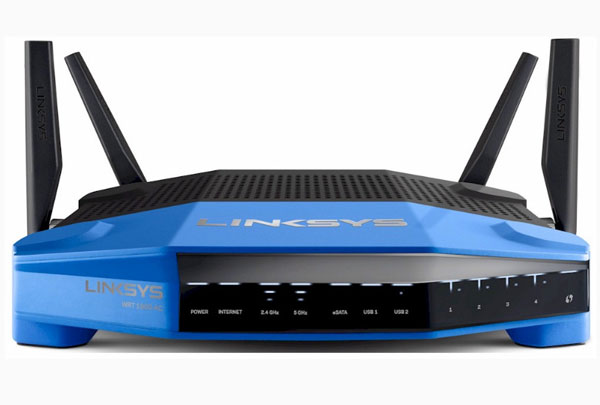
Wireless dual band downlink – no filecopy active Then I started IxChariot downlink streams on both 2.4 and 5 GHz radios, with no storage activity, to get the baseline shown below. write, with expected ~75 MB/s throughput.įilecopy to USB 3.0 drive – no WLAN active The first screenshot below shows the drag-and-drop from the S7 to the WD drive shared by the WRT1900AC, i.e.
#Linksys router wrt 1900 ac windows 8#
the 4+ GB folder of files normally used for file transfer tests, which made it easier to eyeball performance using the throughput plot in the enhanced Windows 8 filecopy window. This is single 1.15 GB Windows backup file vs.

I set up the WD Passport USB 3.0 drive used in the first round of storage testing and used the single Backup.bkf file from the Intel NASPT filecopy test benchmarks. The S7 uses two 60 GB Kingston SSD’s in RAID 0, so it was perfectly capable of keeping up with the WRT1900AC’s previously-measured 75 MB/s filecopy performance. So I pressed my relatively new Acer Aspire S7 running Win 8.1 into service. Since I was running these tests in the back lab where the test chamber is and not in my office, I had to use a different computer to copy files. Routers with USB 3.0 ports must take care with internal design and shielding to prevent impairing 2.4 GHz radio performance (and vice-versa) when both are active.

Linksys WRT1900AC 2.4 GHz bridge throughput comparison – uplink I measured 116 Mbps using the standard PCE-AC66 adapter, so, again, the 20 MHz mode results don’t represent any real gain in performance. Once again, Auto mode provides around double the throughput. Linksys WRT1900AC 2.4 GHz bridge throughput comparison – downlink Looks like something is working because the auto mode throughput is about 2X the 20 MHz mode’s! But I went back and checked the 20 MHz mode results from our standard tests using the ASUS PCE-AC66 AC1750 class client and found 123 Mbps, which is actually a bit higher than measured in this test. The first IxChariot screenshot compares downlink throughput with the router forced to 20 MHz mode and Auto mode. So I don’t really know whether these results represent 256 QAM modulation rates (289 Mbps in 20 MHz mode and 600 Mbps with 40 MHz bandwidth) and I remain a skeptic of the value of 256 QAM in 2.4 GHz. As noted in the original review, neither WRT1900AC provides any indication of bridge link rate, signal level or traffic.

The main router’s 2.4 GHz radio was set to Auto mode, Channel 6 and had WPA2/AES security enabled.Īll I had to do on the Bridge router was select the Wireless Bridge mode and enter the SSID and WPA2 key of the main router. It was parked in the same room under 10 feet away from the WRT1900AC acting as a router. Since I have had mixed results with ASUS’ PCE-AC68 AC1900 client, I used a second WRT1900AC in wireless bridge mode.


 0 kommentar(er)
0 kommentar(er)
